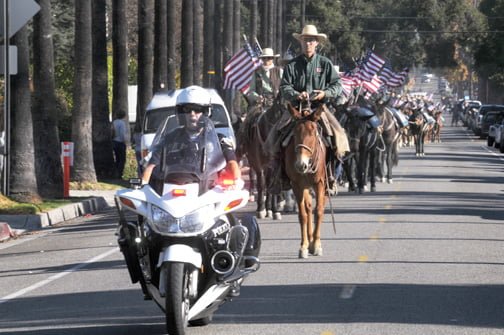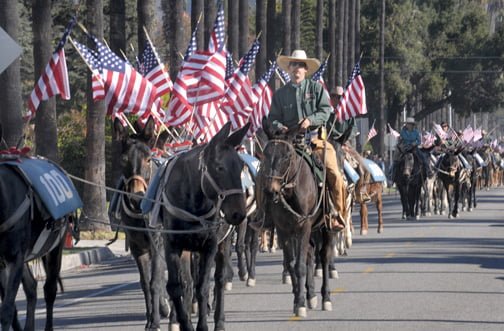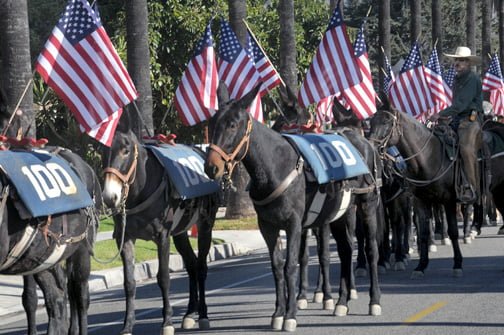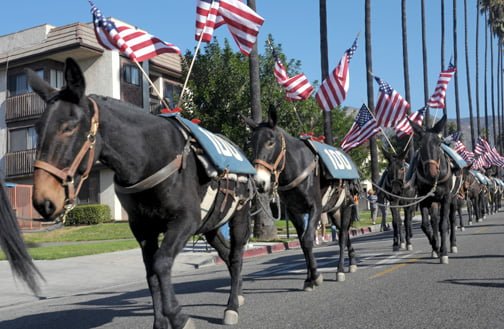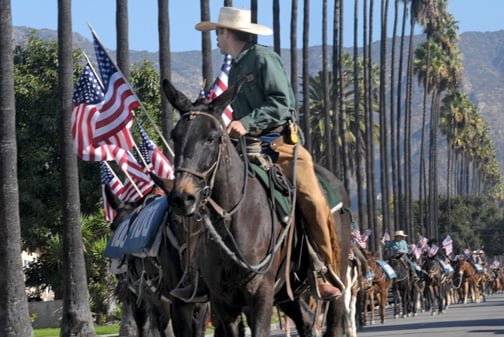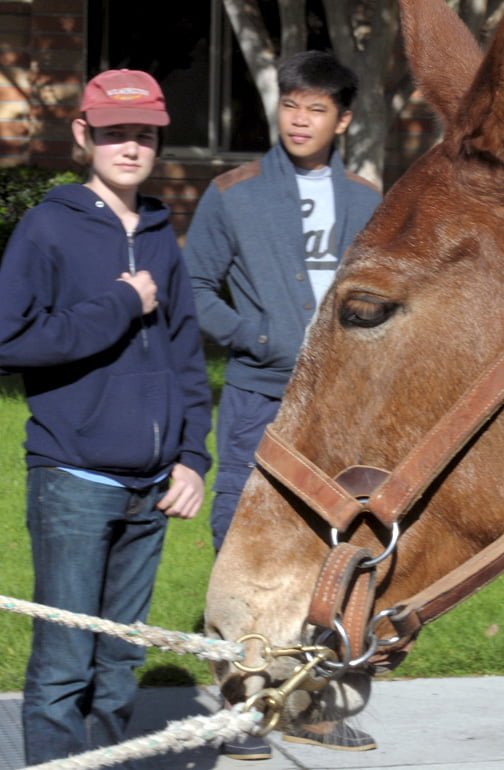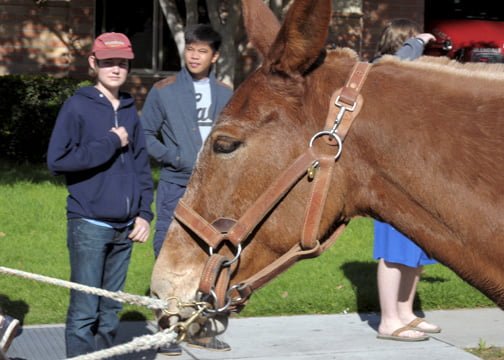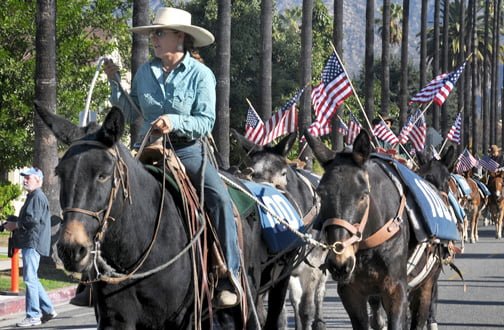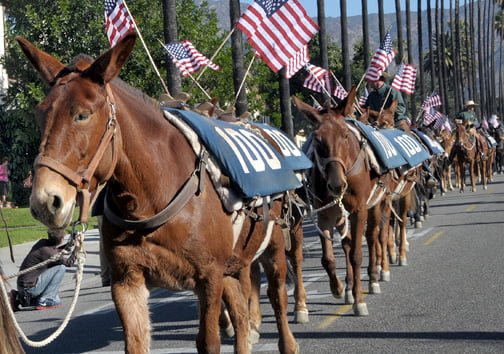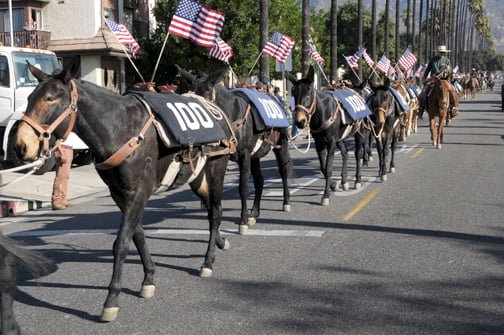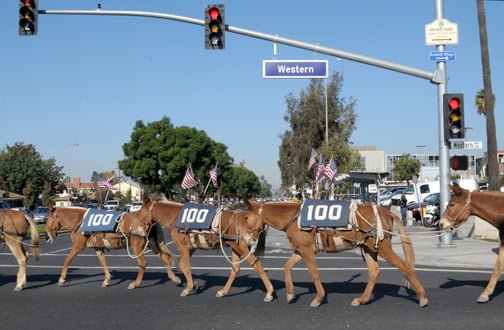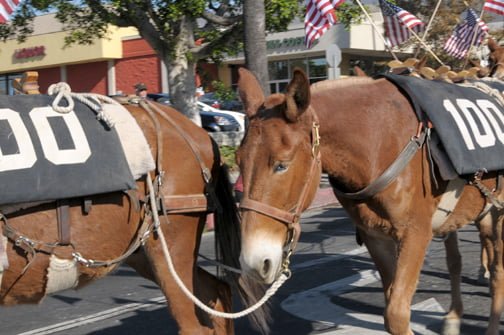
It was a parade of 100 mules that arrived on Monday at Brand Park in Glendale ending a 240-mile journey to remind people of the history of bringing water to Southern California.
By Ted AYALA
Residents who awoke Monday morning to see the sight at Glendale’s Brand Park may have done a double take. One hundred mules were gathered there on the final leg of a journey that began last month, ending at the Brand Library.
The parade of mules – known formally as “100 Mules Walking the Los Angeles Aqueduct” – traveled all 240 miles of the iconic aqueduct. It was the “artist action” of Lauren Bon and Metabolic Studio of Downtown Los Angeles. Their aim was to bring awareness to area residents about the aqueduct’s centennial and the source of the water that is the lifeblood of one of the globe’s most dynamic cultural and economic nodes.
“Mule power shaped the modern west and was a primary force in the construction of the aqueduct,” read the description of the project on Metabolic Studio’s website. “[This] is an action with a resolution to move forward into the next hundred years with a renewed appreciation of this vital resource.”
The event culminated a nearly month-long journey that began in the Owens Valley, the source of the Los Angeles aqueduct’s water. Celebrations over how Southern California has benefited from the aqueduct have been tempered with reflections on the cost that the aqueduct has exacted. Farmers in the early 20th century Owens Valley were ruined by William Mulholland’s Canute-like project that forced the area’s natural waterways to bend southward. For the budding metropolis nearly 300 miles away, though, the aqueduct proved to be the city’s defining moment.
“There it is – take it!” exclaimed Mulholland, the project’s supervising engineer as cascades of water crashed through the aqueduct’s gates upon its opening 100 years ago.
On Monday, approximately 300 spectators gathered in Glendale to watch the mules’ trip from Brand Park to the Brand Library. Police closed off streets along the trail to ensure against accidents. Among those riding the mules was Councilmember Laura Friedman, who spent a few hours Sunday on the trail.
“100 Mules Walking the Los Angeles Aqueduct” is one of several events and art projects being conducted this month to commemorate the aqueduct’s centennial. Among other projects across the state will be the screening of a documentary on the effect the aqueduct had on the Owens Valley, panel discussions on the history of the project, and a ceremony celebrating the mule and horse power employed to bring the aqueduct to life. The project concludes with a ceremony entitled “Bending the Los Angeles River Back Into the City.”

